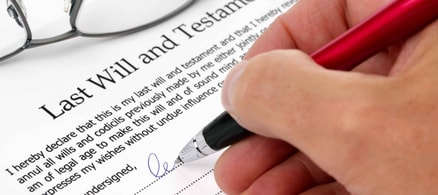Doing a calculation of your net worth can serve as a checkup on your financial health, and let you make any necessary changes.
Don't worry if you've got math anxiety. Really, the formula is pretty straightforward, and you'll get the most accurate results by figuring it out yourself.
How to find your net worth
You can find out what you're worth in a few simple steps:
1. Grasp the concept
Mostly, your net worth is simple subtraction: your assets minus your liabilities.
Assets are all of your stuff that has value, such as savings, investments, your home and vehicles. If you're Nicki Minaj, it's probably your jewellery, too.
Liabilities are your debts, including mortgages, credit card balances and loans of any kind.
To determine your net worth, you'll need to start by coming up with lists of your assets and liabilities.
2. Cover your assets
To take inventory of your assets, think hard and make sure you include everything in your portfolio that has value. Don't forget about retirement savings accounts, like RRSPs or TFSAs, and other investments.
You can include physical items like your car. And, while you'll need to leave off things that don't have substantial value, something like a comic book collection worth $5,000 should be added to your roster of assets.
3. List your liabilities
After sorting all of your assets, it's time to move on to liabilities.
Start writing down everything you owe money on, from credit card balances to loans.
Don't include routine monthly expenses, but do factor in any debt that is currently outstanding.
If you have a lot of different debt sources, consider taking out a debt consolidation loan to simplify your payments — and save big on interest.
4. Do the math

Once you've listed your assets and liabilities, it's time to do the math.
Now that you've taken stock of your assets and liabilities, add up each category. Then, subtract the total liabilities from the total assets.
This will leave you with your current net worth. It's that simple.
Here's an example: Tom has savings of $25,000, investments of $50,000 and a vehicle worth $10,000. That means he has $85,000 in assets.
He also has a credit card balance of $5,000 and a student loan of $20,000 — liabilities totaling $25,000.
Tom's net worth is $85,000 (assets) minus $25,000 (liabilities), which equals $60,000. So, he has a net worth of $60,000.
5. Think about how to increase your net worth
Once you determine your net worth, you may wonder how you can improve your overall financial health. It's all a matter of decreasing your liabilities and increasing your assets.
Start thinking about how to get rid of obligations, such as by consolidating or paying debts. Bolster your assets by investing in real estate, stocks and so on.
If all goes well, you'll slide further toward the Minaj and Bezos side of the scale.
Sponsored
Trade Smarter, Today
With CIBC Investor's Edge, kick-start your portfolio with 100 free trades and up to $4,500 cash back.





